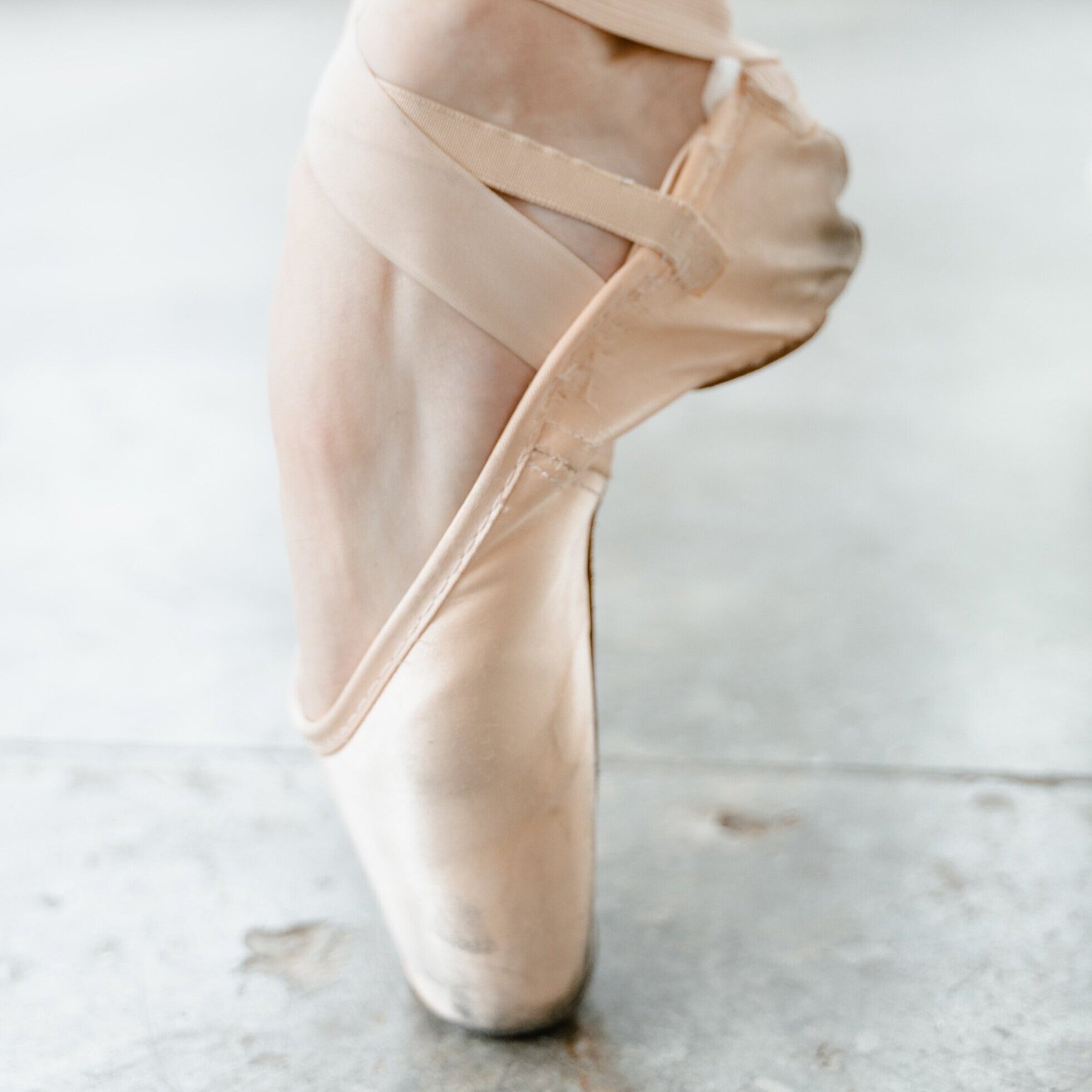Why it's so important to get pointe shoes fitted professionally
When people think of ballet dancers, they often think of dancers wearing pointe shoes and dancing on their toes.
Pointe work is something many dancers work towards - whether as a child or an adult. And with some dedicated training and strengthening, it’s achievable for most.
Read our handy guide on how to progress towards pointe work, how to get your first pair of pointe shoes and what it’s like to dance en pointe.
What is pointe work?
Pointe work is a major part of classical ballet technique where a dancer supports his/her body weight on the tips of the toes through a fully extended foot.
Pointe shoes are the only way in which a dancer can dance ‘en pointe’; they provide the structural support necessary to allow correct weight distribution through the toes.
Pointe shoes were designed to make dancers appear ‘sylph-like’ and although this technique is performed predominantly by female ballerinas, there are many companies with male dancers performing en pointe also.
Can adults do pointe work?
Age is not a consideration factor when deciding if a dancer is ‘ready’ to go en pointe; the only time age is considered is when a dancer is below the age of 12 or 13. This is due to the bones within the feet often being too soft to safely execute pointe work. The only exception to this is if the dancer is extraordinarily strong and has trained for many years.
So yes, adults can certainly do pointe work. As professionals within the dance industry, we consider elements such as strength and placement of the foot, alignment, turnout and factors such as any pre-existing injuries and the length of time a dancer has been training for.
How can I dance en pointe?
In order to dance en pointe, you will need to have professionally fitted pointe shoes. For those in the UK, if possible, we suggest visiting the famous dance wear shops in London (such as Freed of London, Sansha, Capezio, Bloch etc) or going to a reputable, local dance shop run by experts.
You must never buy your first pair of pointe shoes online without having the shoes professionally fitted as you risk serious injury.
Once you have received your fitting and if you are happy with the shoe you have chosen, you can easily buy the exact same size, width and brand online.
However, if you wish to change brands or swap to a different shoe type, you will need to return to a dance wear shop and repeat the fitting process again - this is due to differences between shoe designs; as an example, you may be one size in Freed but a completely different size in Sansha.
What do I need to do and know to be ready for pointe work?
Pointe work requires the following:
Strong feet
Strong ankles
Excellent pull-up and posture
A good knowledge of all the basic and intermediate ballet positions and exercise types.
Most graded ballet classes build towards pointe work naturally and some schools even offer specific pointe preparation lessons.
How will I know when I’m ready?
The best way to be sure is to ask a teacher or professional. If you have been taking lessons, ask your teacher. You might not get the answer you are looking for but be patient, ask for feedback and get to work strengthening those feet even more.
How do I get my first pair of pointe shoes?
This section is REALLY important. An ill-fitting pair of pointe shoes could permanently damage your feet and will make dancing en pointe difficult and painful.
For any pair of pointe shoes, you need to get them professionally fitted. Contact a reputable dance shop and book a pointe shoe fitting. Most dance shops will require you to book an appointment for a pointe shoe fitting because it can take up to an hour to find the right pair.
Wear ballet tights or ballet socks to your fitting. When you get there, the fitter will ask you questions about your experience, your level and they will look at your feet to establish width, foot shape and standing muscle spread.
If you have never had pointe shoes before, be honest. It’s really important that your first pair is fitted with patience and attention.
You won’t be expected to dance en pointe but the fitter will ask you to stand in 1st and rise up in 1st at a barre. The fit is established both on flat foot and en pointe. Sometimes a shoe can look and feel great on flat but be too big or painful up en pointe.
The fitter may try different toe coverings and pads in the shoes so you can find which are most comfortable. It’s rare that dancers, especially beginners, would dance without any toe padding in the shoe.
Things to check when booking your pointe shoe fitting:
Do they stock multiple pointe shoe brands? Specifically the world-leading brands such as Bloch, Grishko, Freed, Gaynor Minden etc.
Do they require you to book an appointment for a pointe shoe fitting?
How long will the appointment last?
Have the staff been trained in pointe shoe fitting? Usually the big brands such as Bloch and Freed offer pointe shoe fitting courses which stores can send their staff on.
Is pointe work painful?
It can be. If you have a well-fitted pair of pointe shoes, the pain will be minimal but being en pointe is not a totally natural thing for a human to do so there will always be some pain or discomfort associated with it - especially if you dance en pointe for a while without a break.
Will pointe work damage my feet?
If you have a well-fitted pair of pointe shoes, you shouldn’t see any damage occurring to your feet. Having said that, the odd blister is common-place. Dancers always have Compeed blister plasters in their bags!

